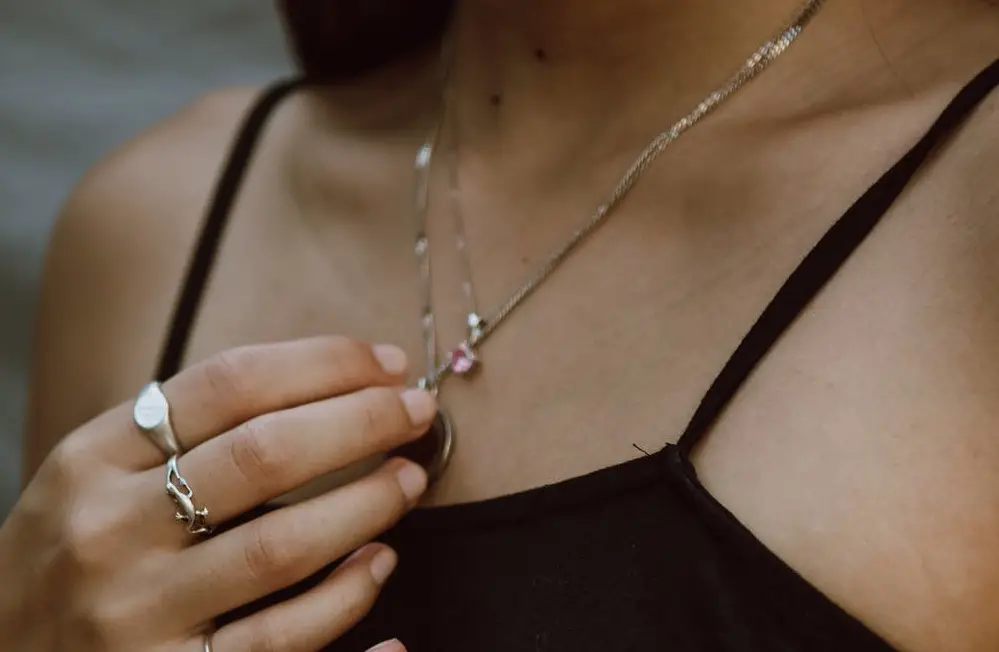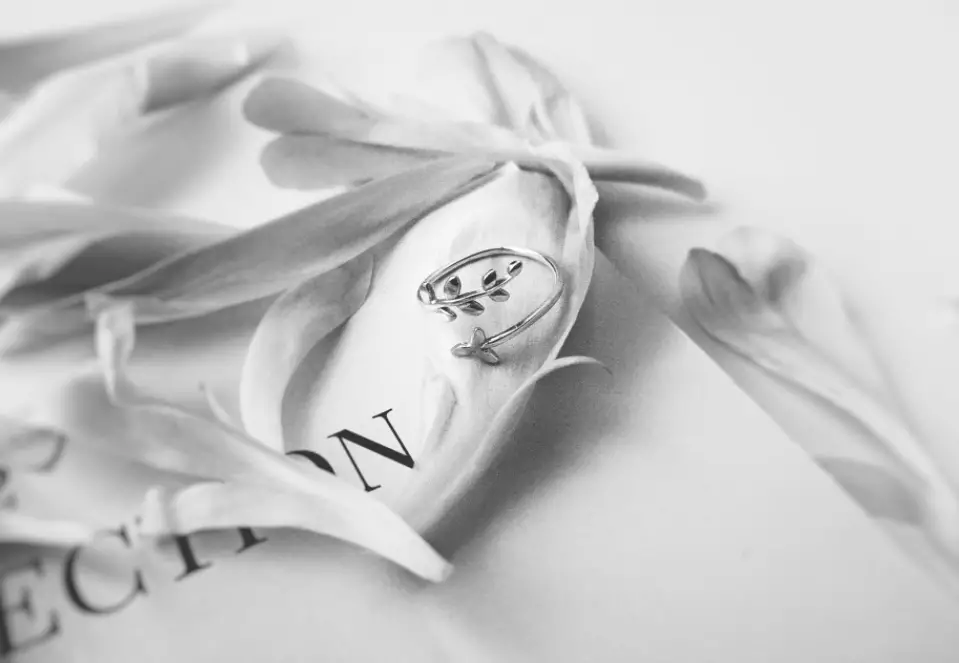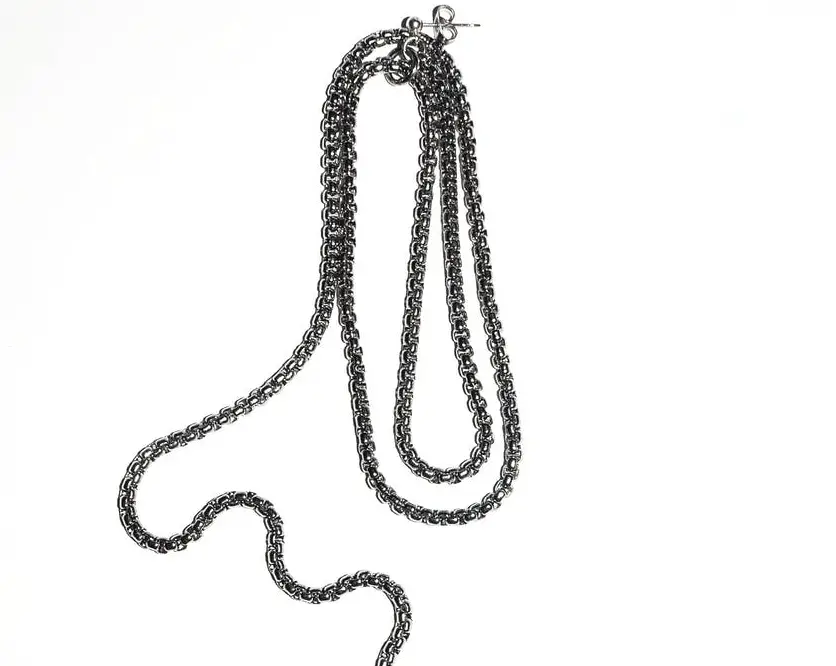Sterling silver, also known as 925 silver, is prized for its durability, shine, and affordability in jewellery.
Comprising 92.5% pure silver mixed with alloy metals like copper, it offers the ideal blend of beauty and strength, making it perfect for long-lasting pieces.
Beyond aesthetics, 925 silver holds intrinsic value linked to the silver market, carries resale potential, and often features hallmarks that confirm its authenticity.
Whether valued as an investment or for daily wear, sterling silver remains a timeless choice with enduring appeal.
Let's get straight to the point
925 sterling silver is highly valued in jewellery due to its 92.5% pure silver composition, durability, and shine. Known as sterling silver, it’s strengthened by adding metals like copper, making it ideal for long-lasting pieces.
Beyond its aesthetic appeal, it holds intrinsic value tied to the silver market, offers resale potential, and is often hallmarked with "925" for authenticity.
Sterling silver’s affordability and timeless style make it popular in jewellery and luxury items, with applications extending to electronics and home decor. It combines elegance with investment potential for buyers, maintaining strong market demand and lasting worth.
What Is 925 Silver?

925 silver, commonly referred to as sterling silver, is a popular metal in the jewellery industry, recognised for its durability and bright, polished appearance.
It consists of 92.5% pure silver and 7.5% of other metals, typically copper. Pure silver (99.9%) is too soft for making long-lasting jewellery, so adding a small percentage of metal, like copper, increases its strength while retaining the desired shine.
Why Is It Called 925 Silver?
The term “925 silver” originates from the percentage of silver content:
- 92.5% silver in the alloy ensures strength.
- 7.5% other metals, usually copper, add resilience to the silver.
Any jewellery or item marked with 925 or S925 is confirmed as sterling silver. This hallmark indicates authenticity, helping buyers differentiate genuine silver from imitation or plated products.
The Value Of 925 Silver
For those curious about sterling silver's financial or sentimental worth, the answer is yes—it holds considerable value.
The worth of 925 silver comes from several factors, including its intrinsic silver content, resale potential, durability, and market demand. Here’s a closer look at why sterling silver is considered valuable.
1. Material Value Of 925 Silver
The core of sterling silver’s value lies in its silver content. With 92.5% silver, its worth is directly tied to the current silver market price, which fluctuates between $15 and $23 per ounce.
- Silver content: At 92.5% purity, the silver content alone holds significant value.
- Scrap value: If the item is no longer wearable or desirable, its silver can be melted down for its scrap value.
Example Calculation:
If the silver market price is $20 per ounce, a sterling silver item weighing 1.5 ounces would contain:
- 1.5 ounces x 0.925 = 1.3875 ounces of pure silver
- Estimated value: 1.3875 x $20 = $27.75
The intrinsic value of silver helps ensure that sterling silver retains substantial worth, making it a solid choice for investment or collection.
2. Longevity And Durability Make It A Smart Investment
The strength and durability of sterling silver make it a long-lasting investment:
- Reinforced composition: Added metals make sterling silver more resistant to bending and scratching, allowing it to withstand daily wear.
- Preservation over time: With regular polishing, genuine 925 silver can retain its shine and beauty for years.
Key Advantages:
- Everyday durability: Sterling silver resists wear and tear, making it ideal for rings and bracelets.
- Classic appeal: Its timeless look always stays in style.
When considering jewellery or heirloom pieces, sterling silver is highly valued for its ability to endure and retain its aesthetic, even after years of use.
3. Recognised Hallmark Enhances Assurance And Value

A visible hallmark, such as 925 or S925, enhances an item’s value and desirability:
- Proof of authenticity: The hallmark assures buyers they purchase genuine sterling silver, not a silver-plated imitation.
- Higher resale value: Hallmarked items are more desirable on the resale market as they confirm the piece's silver content.
What to Look For:
- Visible 925 stamps: Check the jewellery for a "925" or "S925" stamp, which confirms sterling silver content.
- Trusted purchase: Hallmarked silver typically retains a better resale value due to its verified quality.
For buyers and collectors, the hallmark is a valuable sign of authenticity, adding assurance and increasing the item's resale potential.
4. Sterling Silver’s Strong Market Demand
The popularity of sterling silver contributes to its worth in the jewellery and luxury goods markets:
- Consumer demand: Sterling Silver’s affordability and elegance make it a top choice for jewellery lovers.
- Versatile design possibilities: Silver’s malleability allows for intricate designs, further increasing its appeal.
Benefits for Buyers:
- Affordable luxury: Sterling silver offers high-end appeal at a fraction of the cost of gold or platinum.
- Hypoallergenic properties: Most sterling silver is nickel-free, making it safe for people with skin sensitivities.
The consistent demand for sterling silver and its versatility in design helps maintain its value, ensuring that both new and vintage pieces hold strong market appeal.
5. Practical Applications Beyond Jewellery
Sterling silver’s value isn’t limited to jewellery; it has practical uses in various industries, adding to its overall worth:
- Industrial applications: Silver’s conductivity and antibacterial properties make it valuable in electronics and medicine.
- Home decor and silverware: Sterling silver is frequently used for fine dining utensils, decorative items, and even coins.
Why This Matters:
- Demand across industries: The need for silver in sectors beyond jewellery supports its market value.
- Antibacterial properties: Silver is often used in medical settings for its health benefits.
Sterling silver’s applications across industries contribute to its intrinsic worth, making it a desirable metal for more than just aesthetics.
6. Antique And Collectible Value Adds Further Worth

Certain 925 silver pieces, particularly antique and luxury items, can carry significant collectible value:
- Collectible status: Vintage sterling silver items may become more valuable due to their craftsmanship and rarity.
- Luxury brands: Designer or custom sterling silver pieces tend to hold their value well and often sell at a premium.
Factors That Increase Value:
- Age and condition: Older, well-maintained pieces can fetch higher prices.
- Notable makers: Branded or custom sterling silver items often come with added resale value.
Antique sterling silver is highly regarded by collectors. Well-preserved pieces gain extra value over time as unique or rare collectibles.
7. Resale Value And Investment Potential
For those considering sterling silver as an investment, its resale value is reliable:
- Lower risk than costume jewellery: Unlike silver-plated items, genuine sterling silver can maintain or even increase value.
- Demand in resale markets: Buyers appreciate sterling silver's authenticity and durability, making it a sought-after option on resale platforms.
Why Sterling Silver Resales Are Valuable:
- Timeless quality: Sterling silver retains its lustre, which appeals to many buyers.
- Restorability: Sterling silver can be easily polished to restore its original shine.
For investors or those seeking jewellery with strong resale potential, sterling silver offers stability and lasting appeal.
8. Limitations And Considerations Of Sterling Silver
While sterling silver is valuable, there are some limitations:
- Tarnishing: Sterling silver tarnishes over time due to its copper content, requiring occasional cleaning.
- Potential allergens: Though generally hypoallergenic, some may experience sensitivity to alloyed metals.
Important Factors:
- Regular maintenance: Tarnishing is manageable with routine polishing.
- Skin sensitivity: Sterling silver suits most people, but those with sensitive skin should ensure compatibility.
Despite these minor downsides, sterling silver is favoured for its beauty and resilience. Buyers can confidently invest in 925 silver, knowing they have a high-quality metal that stands the test of time.
Conclusion
925 sterling silver holds undeniable value as an investment and a fashion choice. Its 92.5% pure silver composition ensures intrinsic worth tied to the silver market, while the added durability from alloy metals like copper makes it ideal for long-lasting, beautiful pieces.
With visible hallmarks confirming its authenticity, sterling silver items are highly sought after in the resale market and by collectors. Beyond jewellery, sterling silver’s versatility across electronics and home decor industries supports its continued demand and enduring appeal.
For those who appreciate a blend of affordability, elegance, and investment potential, sterling silver stands out as a timeless choice with lasting worth.
FAQs About 925 Silver
Actually, 92.5 percent is not an accepted price for gold. There is a strong possibility that a piece of jewellery branded "925" or a similar mark is not actually made of pure gold. Instead, sterling silver probably served as the piece's foundation, and the gold finish was added on top.
At the current market price, 1 ounce of.925 silver is about $20.76, while 1 pound of silver is valued $302.78.
Guaranteed.925 purity silver. For jewellery, sterling silver is the gold standard in the United States and much of the rest of the world. It contains silver at a concentration of 92.5%. Other metals, such nickel, are occasionally used to make up the remaining 7.5%.

